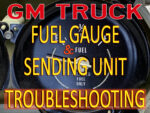
Tile: if only the installation were as simple as the customization process. It’s so easy to walk into any home improvement store and distract yourself with the endless possibilities among tile choices. Hundreds and hundreds of colors, sizes and combinations to choose from, as well as a large selection of grout color options. While style choices have continuously changed over the years, one thing has remained same: the installation process.
I’m quick to admit that I’m not a fan of messes. Even as a frugal family, we will spend a little extra if it means less time prepping and cleaning up before and after a project. Recently, we’ve been making some updates to our kitchen but saved our backsplash project for last because we assumed it would be the messiest and most time-consuming. We had almost finished up our shopping at the local home-improvement store when something caught my eye that sounded almost too good to be true. As I picked it up I thought to myself, “There is no way my husband is going to go for this.” He actually did! He loved the idea of completely eliminating the use of thin-set altogether and using an ultra-strong adhesive sticker-like application in its place. Also, you have the ability to grout instantly rather than waiting for any thin-set to completely dry. He saw that the product had received great reviews online from other users and decided that we should give it a try. The price wasn’t bad either, considering we only needed one roll (hopefully) to complete this project. Before we get started, I’d like to note that this review consists entirely of my own opinions and I am neither paid nor compensated by Mussel Bound.
The product we would be testing for the first time is called Mussel Bound Adhesive Tile Mat. It is around $25 for one canister, which consists of enough adhesive to cover approximately 15 sq. ft. This was perfect because we only needed enough for around 14.5 sq. ft. to complete our backsplash project. The instructions are clearly labeled and easy to follow, printed on the outside of the canister as well as on a large sheet contained within the canister.

Here’s what we also used/needed to complete this backsplash project:

Pictured are: wedge spacers, unsanded grout (white), white caulk for the trim, ceramic mosaic tile, grouting sponge, and tile spacers. Not pictured: grout float and large bucket used for mixing the grout, as well as a wet saw used to cut the backsplash tiles.

Other items used: power drill, outlet extender spacers, and precision knives for cutting the adhesive around outlets and corners.
The tile spacers were something that we preferred to have on hand just in case we needed them. There is one major pro and con to using adhesive as opposed to thin-set. Pro: it grabs ahold of your tiles and will not slide or come loose easily. Con: tiles will not slide or come loose easily. That being said, we didn’t use the spacers a lot because they would get stuck to the adhesive and cause more headache than it was worth. It was much easier just taking extra time and ensuring our placement looked good from every angle imaginable. Yes, there were times we had to remove and reposition some tiles. You’re limited with this though because the adhesive is either going to let go of your tiles and allow one more chance to reposition or it won’t let go of your tiles without breaking them. That being said, we used more of the wedge spacers between our bottom row of tiles and our countertops than any of the other ones.
To get this process started, you’ll want to ensure that your walls are clean and dry before applying the Mussel Bound adhesive. Wipe the walls with a damp cloth to clear away any dust, dirt, debris or grime and allow to dry before moving on to the next step.

You’ll also want to shut off the power to the outlets that you will be working on, too. Install the appropriate amount of spacers within your outlets so that the light switch covers fit snugly against the tile once it is installed.

Now we’re ready to start rolling the adhesive on. The directions suggested to roll it on like you would with wallpaper, so that is what we did. There is a protective sheet (the one pictured with the logo) that should remain intact on top until you are ready to apply your tiles to it. Leaving it on made it easier to cut around outlets as well as the countertop.

Notice that there are some larger gaps closer to the end as well as just above the countertop in a few spots. We wanted to make sure that we got all of the larger areas covered first, and then we used what was left over and cut smaller strips to fit those spaces. We had the extra so we thought, “why not?” This is just my opinion, but we didn’t worry about making sure that every tiny gap was filled. The adhesive did a fantastic job of securely holding our tiles into place without any sort of movement.

We also took one of our saws and cut the large roll of adhesive later on when we needed smaller pieces. The instructions within the packaging suggested this as well. If you do this, you’ll want to make sure that you wipe any sort of dust off of the roll afterwards so that your adhesive gets the best contact possible with the wall.

This is the tile that we chose to use for our backsplash.

After you peel the protective top layer off of your adhesive sheet, the real work begins. As I previously mentioned, you really only get one good shot at making sure your tiles are center to where they need to be, level, etc. Once these tiles are applied to the Mussel Bound adhesive, they aren’t easily moving. We were able to successfully peel a couple away that needed to be readjusted, but I’ll admit it was pretty scary! We didn’t want to break our tiles and we didn’t want to damage the adhesive that was already applied to the wall. The packaging indicates that if you have to “patch” any adhesive that may have pulled away from the wall (in the event that you need to reposition), it will be fine to apply it over the existing damaged one. Each sheet is approximately 1/32 of an inch, so it won’t add too much width to your layering.

My second favorite thing about this whole project (behind being a mostly mess-free project) was not having to wait to apply our grout. Only having to mix the grout instead of both grout AND thin-set was fantastic. We were able to apply the adhesive, add the tiles, and then head straight into our grout work. My husband has limited time for projects during the week and this wasn’t a project to tackle alone for a stay-at-home mom with a curious and impatient toddler running around. As a team, we spent a day during the weekend on this project and I couldn’t be happier with the results.

Have you used a product similar to the one discussed? What was your experience? Perhaps you’ve used this for something other than kitchen backsplash. We want to know! Feel free to share or comment your questions/thoughts. Thanks for stopping by!
DIY Furniture Upcycle Using Chalk Paint
















Would this product work for putting tile around a fireplace???
Thanks for this. I’m gonna share this to my fb.
Thanks for this review of Musselbound! My husband and I are planning to tile our kitchen backsplash in the next week or two and we bought Musselbound to use. How is yours holding up almost a year later?